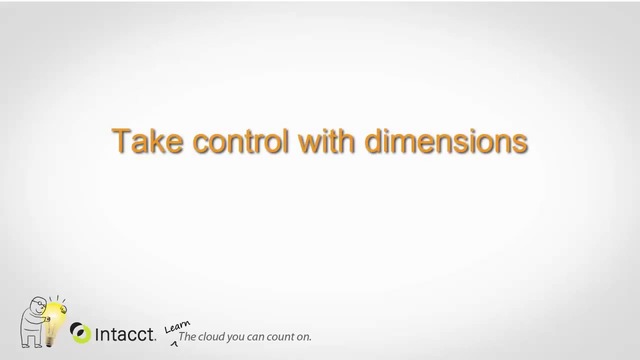

A question we are often asked as an Intacct partner is what exactly is the Dimensional Reporting capability in Intacct? Is it a different approach to the report writing functionality all ERP packages have, or does Intacct have something unique? Simply put, Intacct Dimensions allows you to “tag” individual transactions, which enables you to create reports simply and easily.
It all starts with the way Intacct allows you to configure your chart of accounts. Traditional ERP systems require you to create accounts with segments representing your cost centers. That means if you have locations in Philadelphia, New York and Boston, you have to create an account structure with a segment for each of those locations, and populate that segment with the name of the city. So if you have 40 revenue and expense accounts, then your chart of accounts will have 120 accounts to accommodate all of the possible account and location combinations. With Intacct Dimensions, you can set up a Dimension representing each city, and therefore you only need 40 accounts. As you enter transactions, you tag transactions with the right account and location combination. That allows you to accomplish with 40 accounts what once would have required 120.
To create reports, the end-user can utilize Intacct’s Flex Reporting, and generate numerous reports for analysis using data direct from the General Ledger. You can see all aspects of your business, across multiple companies and operating units. For instance, you can view revenue by products, customers, locations, or time periods. Dimensions are available all through your system, even in the sub-ledger. And since they are a controlled list (as opposed to a free form text field), they can be grouped in hierarchies. And best of all, with drag-and-drop capabilities, you can create custom reports in just a few mouse clicks. Things that used to take hours in traditional ERP packages can be done in minutes